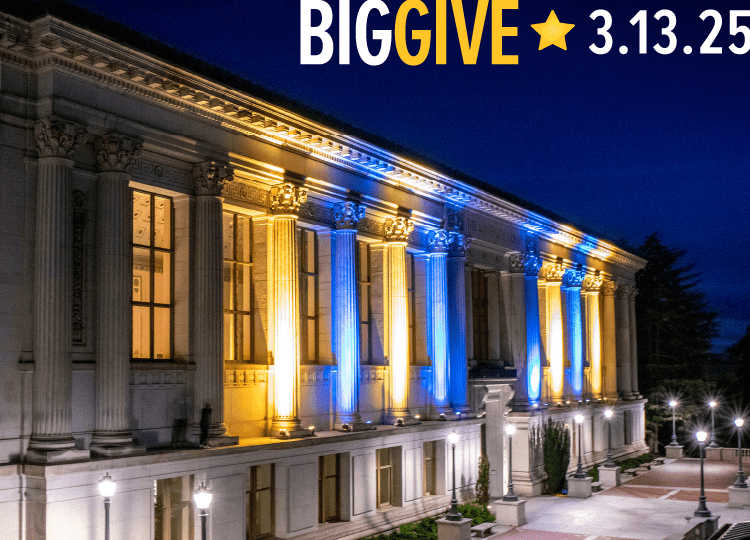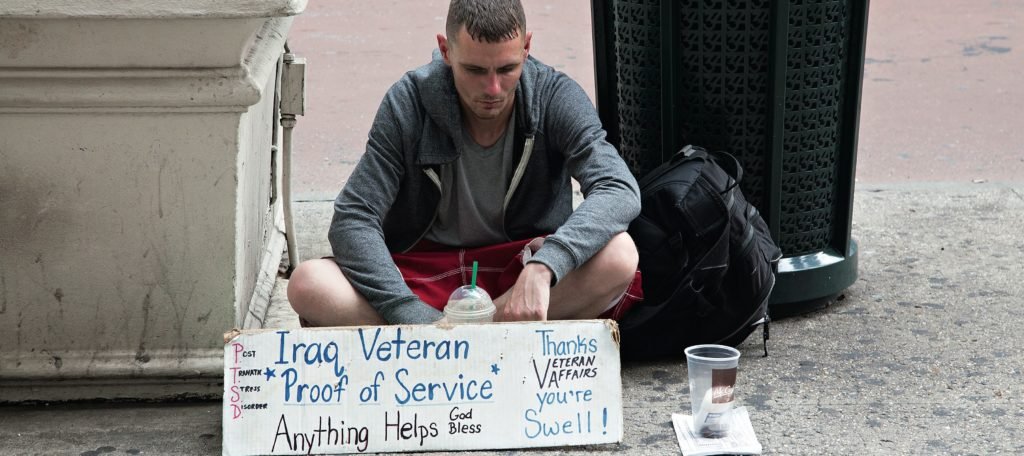A student’s account of psychosis, isolation, and love
I am susceptible to believing, with complete conviction, things that aren’t true.
All my adult life I have resided on the psychotic spectrum, a set of serious mental disorders that interfere with properly interpreting stimuli, resulting in social, emotional, and cognitive difficulties—what I call my “thought problems.” When I was 21, I was diagnosed with schizophrenia, later re-diagnosed to schizoaffective disorder and, eventually and more firmly, to delusional disorder, persecutory type.
I started at UC Berkeley in a summer program while still 17. I remember sitting in a chemistry class of 300 students, sweating profusely.
People with persecutory delusional disorder often feel conspired against and have a hard time discerning the real from the imagined. In my own case, social environments frequently seem predatory, and I worry about ridicule, conspiracy, even physical harm. As one might expect, these false beliefs—delusions—have significantly impacted my life, sometimes making fundamental activities like driving, shopping, and eating in public nearly impossible.
Delusional disorder is unusual, the rarest of the major psychotic disorders. By some estimates, just 0.2% of the population is affected. These numbers illustrate a broader truth—serious mental illness is an isolating experience. One could accept that as inevitable but for one caveat: it is well known that social inclusion improves not only clinical outcomes, but also quality of life, for those with mental illness. In this light, mental illness becomes more simple to think about, at least with respect to best helping patients like me. Efforts to help the seriously mentally ill must focus on understanding and integration.
My departure from the social experience of my peers began at 15 with the appearance of those first thought problems. I played sports with an enthusiasm derived from the respite it gave from a troubled home life. I was very good at tennis, serviceable at soccer, a solid runner.
In my sophomore year, I became unable to play tennis because the attention of others started to feel hostile. The problem soon spread to soccer, a more social sport. I had such a hard time interpreting social conventions—proximity to others, facial expressions, body language, word play—that it affected the quality of my game, and I was cut from the team. In short order, running became my sole sport because I ran alone.
Today, perceptual difficulties like these would be recognized as prodromal symptoms, important signs of emerging psychosis. Early intervention models now exist that hold the promise of avoiding further progression of illness or mitigating its ultimate scope. Back in 1983, though, no such protocol existed, and these problems escalated unrecognized and unaddressed as I entered college.
I started at UC Berkeley in a summer program while still 17. By 19, I had intense fear in most social environments. I remember sitting in a chemistry class of 300 students, sweating profusely as I struggled to make sense of the environment. Sounds converged into cacophony—the people talking next to me, the professor lecturing, my internal voice, the ambient noises in the room. I couldn’t make sense of it and grew terrified I would lose the one thing that meant everything to me—the ability to study and stay in school.
I had figured the more prominent aspects of social life, particularly relationships, were inaccessible to me. And yet, here was this individual to whom I was so obviously devoted.
Eventually I stopped talking entirely in academic settings. I persistently felt exposed and in danger around other people. My basic hygiene suffered. I became disheveled, rarely kept my apartment up, increasingly felt agoraphobic. I took labyrinthine paths to school to avoid people, sometimes walking two miles to go just a few blocks. I began to have auditory hallucinations in crowds or high stimulus environments. The robust psychosis that is now a hallmark of my adult life first took full shape. It was around this time that I sought the help that eventually resulted in my first diagnosis. Sheer determination and the benefits of a highly structured academic program helped me graduate with a dual major in molecular biology and English literature..
Life after college was hard. My dream to attend medical school had to be abandoned. My ability to concentrate was compromised, I wasn’t yet under effective treatment (which would take another five years), and the liabilities of struggling socially made professional pursuits seem out of reach. I lost touch with college friends and my social world contracted. I was unemployed for several years.
At some point, however, I realized my life was going to end in isolation and tragedy unless I fought to regain the social landscape. I enrolled in first year courses at a local community college, just to see how being around people went. It wasn’t easy. Eye contact with others, or in particular the attention of others in confining situations, still agitated me. Being in the classroom provoked robust delusions, convictions that people were watching me, collecting information about me, plotting to do me harm.
Within all that discomfort, however, I noticed something else—I felt much better in other ways. My mind felt liberated by studying again, and the focus it required was invigorating. Even though people were challenging to be around, I also felt comforted by not being so isolated. I began to strategize about managing my psychosis so that I could continue to venture out into the world. School eventually led to a part-time job, which became a full-time job working at a bookstore.
And then something remarkable happened. I met a co-worker at the bookstore and, at age 28, fell in love with a charismatic man who spoke beautiful Spanish, played guitar, and, inexplicably, found my neurotic behavior interesting. The experience had me confused for months. I had figured the more prominent aspects of social life, particularly relationships, were inaccessible to me. And yet, here was this individual to whom I was so obviously devoted. While this relationship did not last, and I have had no equal since, that connection remains, unequivocally, the most human of my life.
While running proved medicative, the social experience was a disaster. Being around a lot of people fueled psychotic symptoms, resulting in conflict with other members of the group.
Following some rough post-college years, I began a slow, arduous process of reconnecting to the world. Starting with school, then work, then, ultimately, love, I was reintegrating myself with that which most defines us—our social natures. Social inclusion is not a preference, but a biological need; even when imperfect, it is essential to the proper clinical and social care of the mentally ill.
However, our cultural instincts regarding serious mental illness remain rooted in exclusion. When I was first diagnosed, clinicians considered it axiomatic that I would leave school. In other words, I was encouraged to disappear. Nobody, even back then, would have dared to adopt such an opinion with a physical disability. And yet, here such advice was deemed appropriate for a student still performing at a very high level. I was quickly categorized as hopeless.
Not long ago, I stood on the corner of San Pedro Street and East Seventh in Los Angeles’ Skid Row. Next to me, seated on the ground amid needles, trash, and human waste, was a young man in florid psychosis. His behavior reminded me of my oldest sister, who was diagnosed with schizophrenia at twenty. Or of myself. How did this man end up here, abandoned? Why do some illnesses elicit empathy, others fear or disdain?
The crux of the mentally ill’s troubled social history seems rooted in the inability of others to sympathize with our differences. The loss of social language so common to the seriously mentally ill leads to peculiar behavior and difficulty navigating socially, which in turn invites judgment, coercive attempts to normalize, ridicule, and, perhaps most dangerously, cultural rejection. We fear what we don’t understand.
I joined a running group some years ago in rebellion against the antipsychotic risperidone, which has significant side effects. Going medication-free was dangerous, and I knew from past experiences that significant exercise was the only adequate replacement. The real problem, though, was presented by the group itself. Constant vigilance and paranoia about even the smallest variable in social environments—standing in crowded spaces, making eye contact, small talk—isn’t the best recipe for social success.
While running proved medicative, the social experience was a disaster. Being around a lot of people fueled psychotic symptoms, resulting in conflict with other members of the group. Not understanding that I sometimes perceive hostility where there is none or that I often feel unsafe around others, people mistook my peculiar, but generally innocuous behavior, as antisocial or combative. Enough tension got generated that people turned to ridicule, even vandalizing my car. My difference and its social consequences caused the loss of once close friends. It was a devastating lesson.
In empathy is the proposition that we can be understood, are knowable to one other, and that liberation is possible for those that suffer in the margins.
Perhaps that situation could have been avoided had I simply been able to tell people that I suffer from a psychotic disorder, the same way another might acknowledge heart disease or diabetes. The stigma of mental illness can be dispelled by informed light, by people replacing old stereotypes with the presence of a real person, humanizing an otherwise tragically misunderstood population. But the ways we conceive of mental illness are imprisoning, and until we reframe that conception, we make already difficult lives more arduous.
Mental illnesses often are invisible disabilities. I frequently wish people could live in my head just for one day so that they might see how hard I work just to keep a foot firmly planted in the social landscape.
As a gay man with serious mental illness, the dual stigma makes it hard to find footing in the world. I recently reread Paul Monette’s moving and poignantly angry memoir, “Becoming A Man.” A conflict resolved in my mind as I understood Monette’s lesson, which begins with self-compassion. The key to freedom from the demons of cultural misunderstanding and exclusion resides with making the invisible visible, by turning inhumane reaction to vulnerabilities into empathy by talking honestly about ourselves—and by listening. In empathy is the proposition that we can be understood, are knowable to one other, and that liberation is possible for those that suffer in the margins.
That sentiment begins with salutation: Hello, my name is Steve, I have a serious mental illness, and I, like you, am human.
For further inquiries, Steve can be reached by email at steve.odonnell@gmail.com.






















